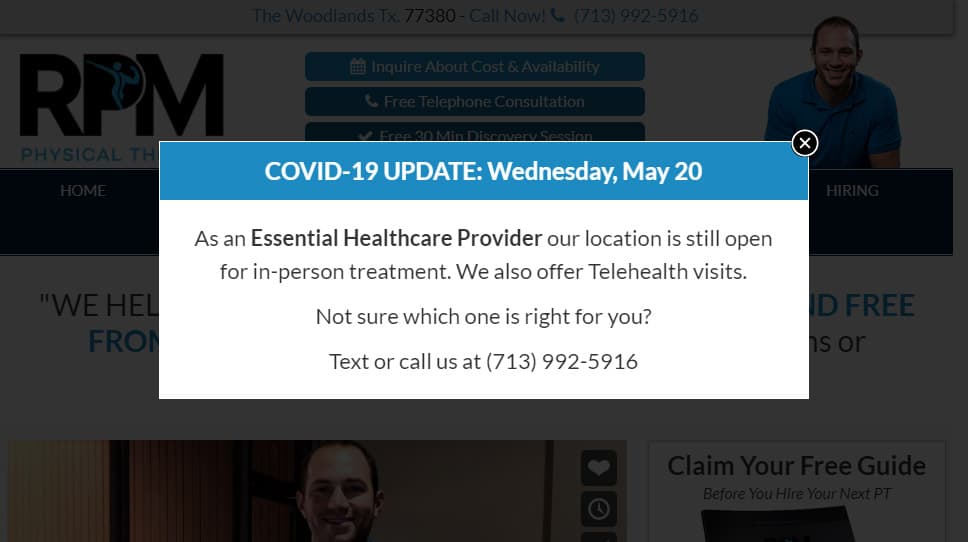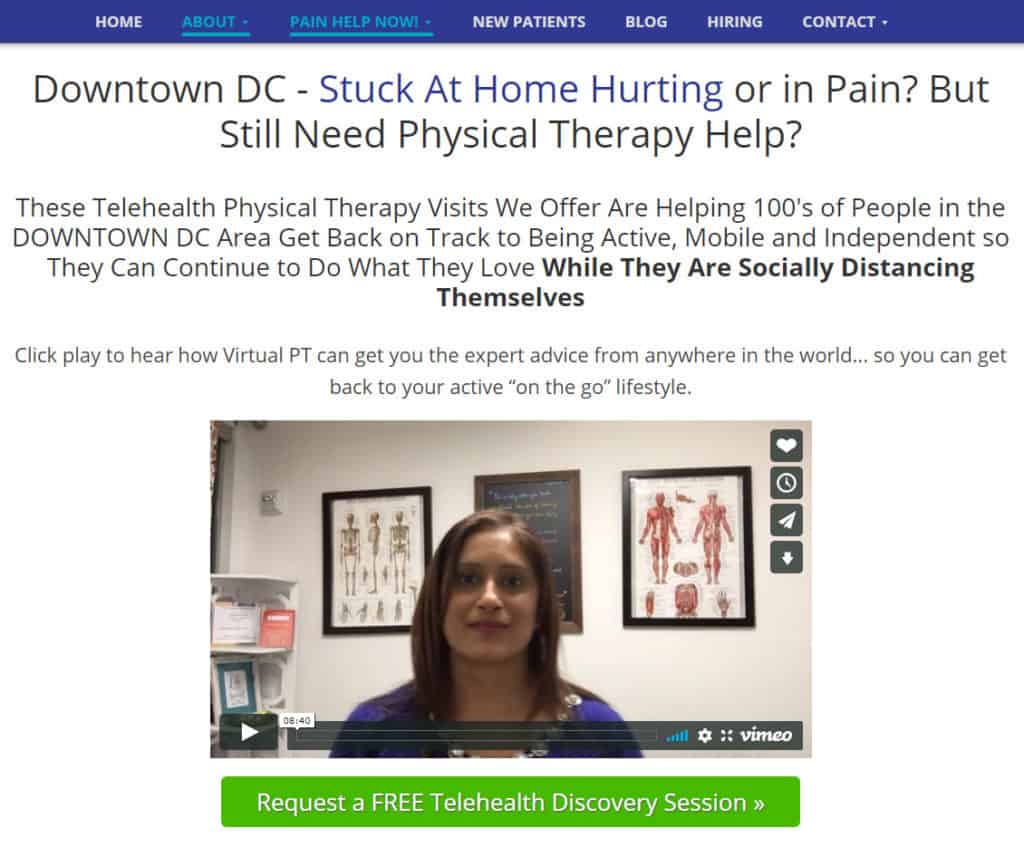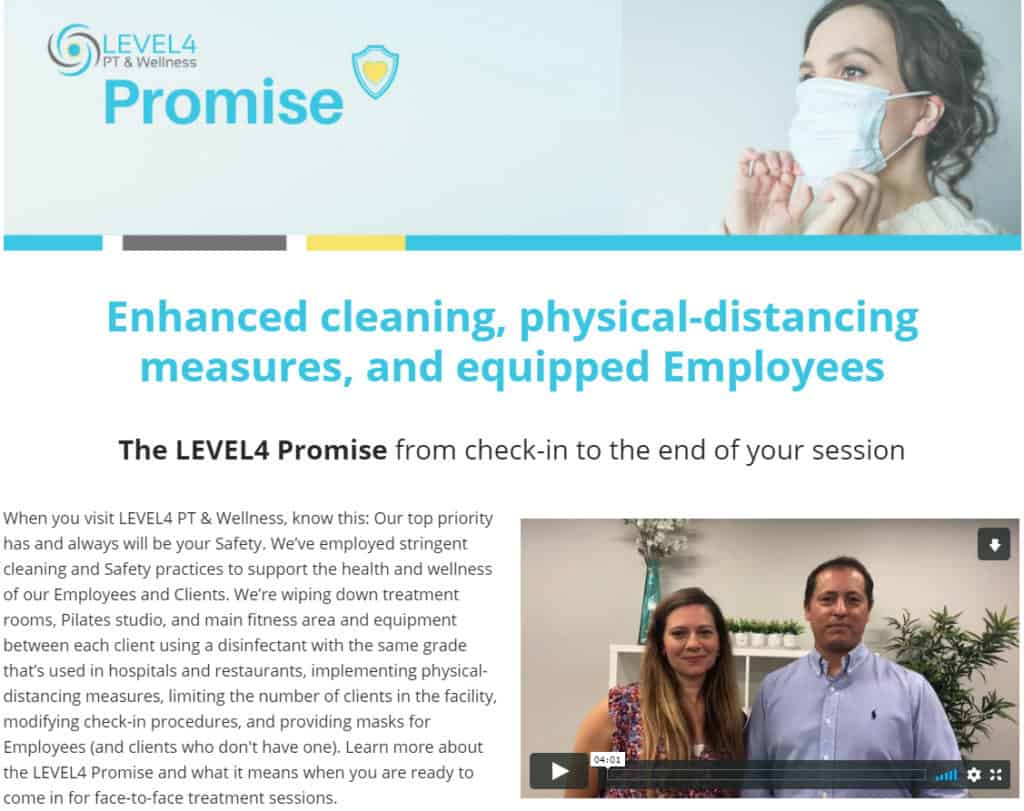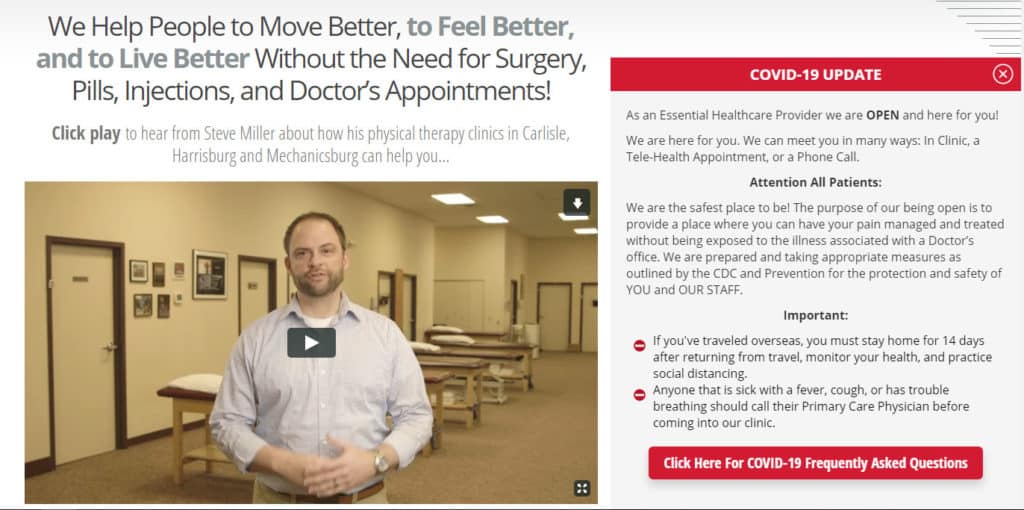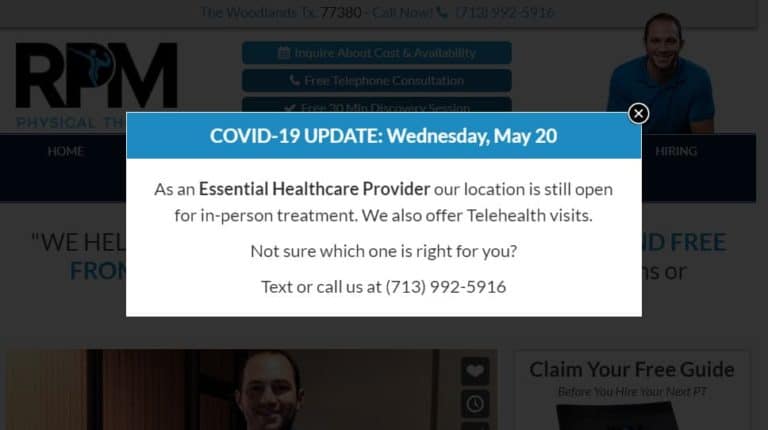Telehealth, Virtual PT, Telerehab, Digital PT, Remote PT… whatever you want to call it, it’s the service that most physical therapists never wanted to offer until March of this year when suddenly everything changed and everyone was scrambling to figure out what to do in order to keep revenue coming into their businesses. Businesses that had relied almost 100% on in-person visits for as long as physical therapy has been a recognized form of therapy, almost overnight had to decide whether they were going to pivot into new ways of treating patients, or “sit tight and wait for the world to get back to normal”.
Now, three months later, things still haven’t “gotten back to normal” and PT business owners around the world have come to realize that it could be many more months, or even years, before things get back to “normal”. Actually, they may never return to how they were before the COVID-19 pandemic, we simply don’t know what’s going to happen, how this whole situation is going to play out in the long term. Really, the only thing we know for sure is that we don’t know what the long term effects of this crisis will be.
No doubt many of you have already figured out what you need to do to keep revenue coming in – maybe you’ve got a nice balance of loyal patients who are still willing to come for in-person treatment plus those who have tried your telehealth options and found that they’re actually a very viable alternative to what some might label “potentially risky” in-person treatments. I know that some people in this community have had incredible success with their virtual PT treatments and wellness options – some of you have even seen your treatment numbers go up and your cancellations and no-shows go down, which is fantastic.
However, the question that a lot of you are still asking is “how to attract new leads to our telehealth services?”. Your existing patients may have transitioned to telehealth without too much resistance (once they realized that this pandemic wasn’t going away anytime soon!) but how about people who have never visited your clinic before, who don’t know what it’s like to meet you and the rest of your team in person? The people who haven’t experienced the “vibe” in your place, who haven’t had the pleasure of chatting to your front desk person for 15 minutes because they arrived early (deliberately) for their appointment. The people who until 3 months ago would have been invited to visit your clinic for a free discovery session so they could meet you and get a feel for what it would be like to become a patient before making any commitment.
These people still exist, probably even more than they did three months ago but a lot of them will be even more skeptical than you were used to – afraid to make in-person visits when they’re not absolutely necessary (how many people are putting up with new aches and pains right now because they just don’t feel it’s worth risking their “other” health for to get treatment?). These people need your help and you have a duty to make the route to receiving your help as clear and easy as possible.
So, How Do You Position Telehealth on Your Website and How Do You Make Sure You Don’t Come Across as A Telehealth-Only Business?
The goal here is to help two different sets of people when previously you really only had to help one set. Now you need your website to talk to people who are not interested in visiting your clinic and are also skeptical about how remote treatment could possibly help ease their pain (you can hear their voice can’t you… “how can you help me if you can’t touch me?”) as well as the people who still want to receive in-person treatment but need some reassurance / permission that it’s OK to do so and that they’re not being irresponsible by seeking in-person treatment.
The solution is to start by empathizing with both these groups of people. Try to put yourself in their position and ask yourself the questions that they are most likely asking. As you start to build up a list of these questions and get a deeper understanding of what these people are feeling you can create the following content:
1. A Telehealth page that explains exactly how your telehealth / virtual PT, telerehab treatment works, from initial consultation through to completion of the plan of care. Write it so that it addresses all the concerns you can possibly think of that your prospective patients are having. Make it a step-by-step process that is super easy for people to understand, with clear headings, lots of reassurance that remote diagnosis and treatment is perfectly viable with excellent outcomes (and certainly better than doing NOTHING).
Focus on some of the positives about virtual treatment including not having to organize childcare, not having to commute or leave work early to attend an appointment. Finish the page off with some FAQs and even some video testimonials – you can simply ask patients at the end of their telehealth sessions if they will answer a few questions on camera while you record them. The influence here is two-fold: it shows that you’ve already had patients who were willing to be treated remotely and it lets people have a glimpse of what a telehealth session might look like.
Record an intro video for this page (no excuses!). Your competitors most likely won’t be doing that and your prospective patients will appreciate that you went to so much effort to explain how you can help them despite the pandemic. Even if you mostly repeat the written content of the page, a video shows that you are willing to make extra effort to help people and it tells them that you really care! It also builds trust as I have mentioned plenty times before 😉
Describing the whole process for new patients, from the initial consultation (call it a “virtual discovery session” if you like), through treatment sessions, talking about the duration and structure of the virtual sessions, the simplicity of the technology involved and the fact that anyone with a smartphone or tablet can access this type of care, then answering questions head-on that you KNOW your prospects will be asking in their own heads, is the key to overcoming the initial resistance. Keep in mind the question a lot of people will be asking: “How can you help me if you can’t touch me?” and do whatever you can to answer it both directly and indirectly. People have more time these days than ever and the way they consume content has changed. Average Session Duration (Google Analytics) is up significantly for many PT sites meaning people are spending more time researching. So if you provide them with plenty of informative content there’s a good chance they will read it ALL / watch it ALL.
Remember to include plenty of calls-to-action to encourage prospects to take the next step which would be to call you, or to fill out an inquiry form on your website.
2. Add a dedicated telehealth inquiry page OR add an option to your existing inquiry forms so that prospects can choose “telehealth” as the location for their discovery session or treatment.
3. Add a “COVID-19 Response” page that describes exactly what measures you are taking to keep your patients safe when they visit your clinic in-person. While you may feel that patients already expect you to take special measures and it goes without saying that you do, it certainly doesn’t do any harm to explicitly describe exactly what you are doing to protect them (and yourself and your team) so that there is absolutely no doubt in their minds that they might be taking an unnecessary risk, or behaving irresponsibly (they may fear that they are risking the health of someone else in their household or they may be criticized or judged by someone in their household), by visiting you in-person.
4. Add a banner, popup or similar to let people know right away that you have telehealth solutions available to them. These can be really annoying so be careful not to overdo it but you absolutely must make it clear that you are open for business and have adapted to the current situation – otherwise you website will look out-of-date and visitors will leave, in search of a business that is clearly addressing the situation. If possible, have something that is highly visible but not too intrusive so that it annoys visitors to the point they want to leave your site! Perhaps something that only appears once per visit but is unmissable. Then ensure that links to your Telehealth and COVID Response pages are easy to find.
5. Google reviews – as more states and businesses open up, reviews will take on additional importance as a source of information about both the in-person and the virtual experience. No longer just about service quality, people will be looking at reviews to determine how well patients are being protected at in-person treatments and whether it’s safe (or desirable) to come back to your clinic. So… it’s time to start requesting new reviews as a matter of urgency!
This article was originally published in Paul Gough’s Cash is King Newsletter in June 2020
